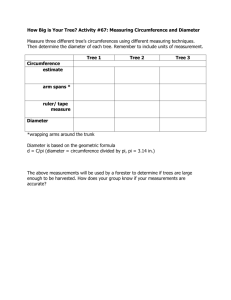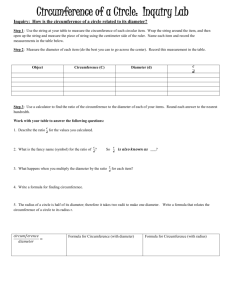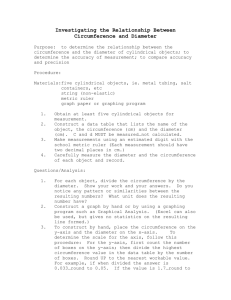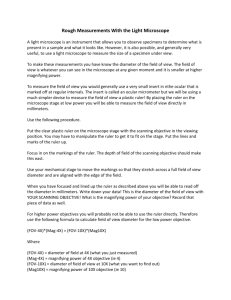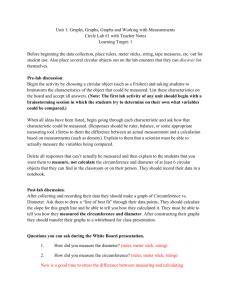Finding the Diameter of a Tree
advertisement
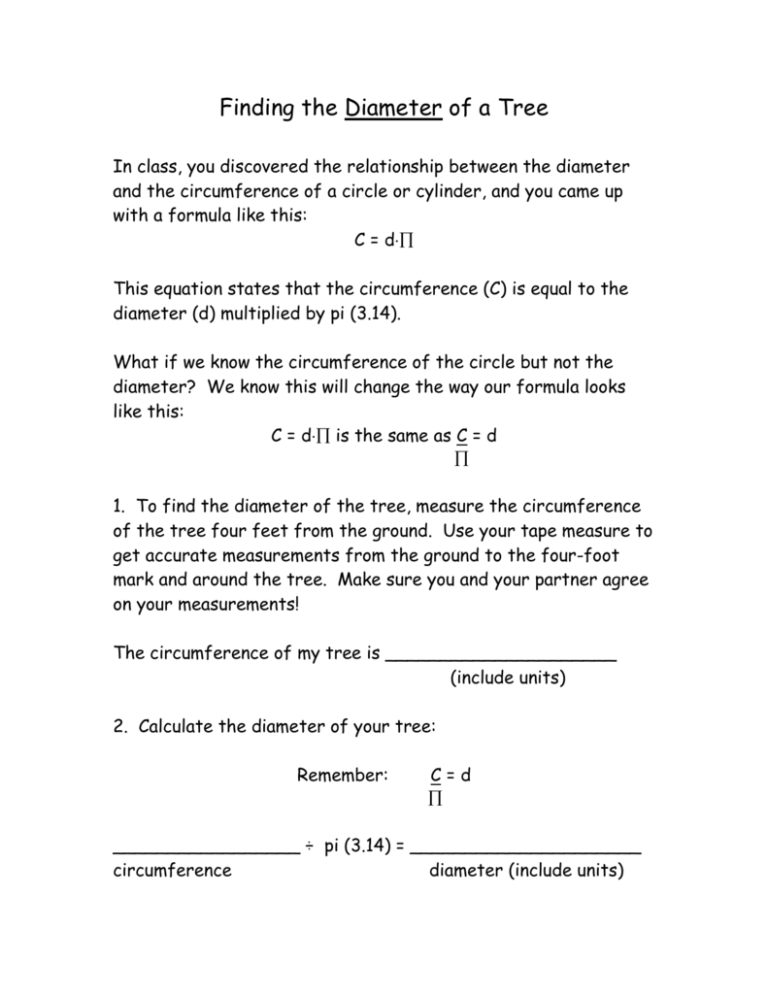
Finding the Diameter of a Tree In class, you discovered the relationship between the diameter and the circumference of a circle or cylinder, and you came up with a formula like this: C = d This equation states that the circumference (C) is equal to the diameter (d) multiplied by pi (3.14). What if we know the circumference of the circle but not the diameter? We know this will change the way our formula looks like this: C = d is the same as C = d 1. To find the diameter of the tree, measure the circumference of the tree four feet from the ground. Use your tape measure to get accurate measurements from the ground to the four-foot mark and around the tree. Make sure you and your partner agree on your measurements! The circumference of my tree is _____________________ (include units) 2. Calculate the diameter of your tree: Remember: C=d _________________ ÷ pi (3.14) = _____________________ circumference diameter (include units) Finding the Crown of a Tree By measuring the crown of a tree, you will discover another way that scientists measure the size and health of trees. 1. On your tree, find the longest branches that you can. 2. Stand under the longest branch that has a long branch coming out of the opposite side of the trunk. 3. Place a string underneath the branch, starting just under the end of the long branch you have selected, and lay it under the tree until it is just under the end of the opposite long branch. Mark the string at that point. 4. Measure the length of the string. This will be the measurement for the crown of the tree. ______________ (This length is the crown) 5. The crown of my tree is ________________________ (crown measurement with units) Finding the Height of a Tree Method 1: Proportional method using a ruler: 1. Have your partner stand at the base of the tree. 2. Back away from the tree, holding your ruler in front of you in a vertical position. Keep your arm straight. Stop when the tree and the ruler appear to be the same size. (Close one eye to help you line it up.) 3. Turn your wrist so that the ruler looks level to the ground and is in a horizontal position. Keep your arm straight. 4. Have your partner walk to the spot that you see as the top of the ruler. Be sure the base of the ruler is kept at the base of the tree and your partner is walking at a 90 degree angle from your line of sight to the tree. 5. Measure how many feet he or she walked. That is the tree's height. Round to the nearest foot and record your answer as the height. My tree is _____________________ tall using the ruler method. (include units) 6. Switch roles with your partner and repeat Steps 1-5. If you and your partner obtain completely different results, measure the height again until you agree on an accurate measurement. Method 2: Proportional method using shadows: 1. Measure the length of the shadow of a tree. 2. Measure the length of the shadow of an object of known height (e.g., the student) 3. Establish an equation representing equivalent proportions between shadow length and height. Include units. X ÷ _____________ = _______________ ÷ ___________ (tree height) ÷ (tree shadow length) = (student height) ÷ (student shadow length) 4. Solve for tree height (use calculator) x = __________ times __________ ÷ _____________ (tree height) = (tree shadow length) x (student height) ÷ (student shadow length) Measured by this method, my tree is ________________tall. (include units)
